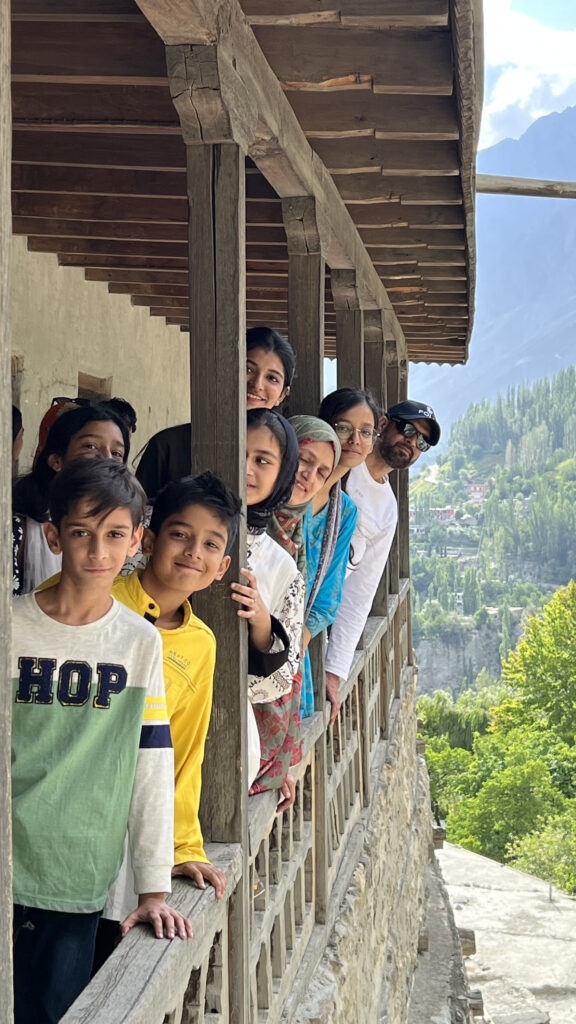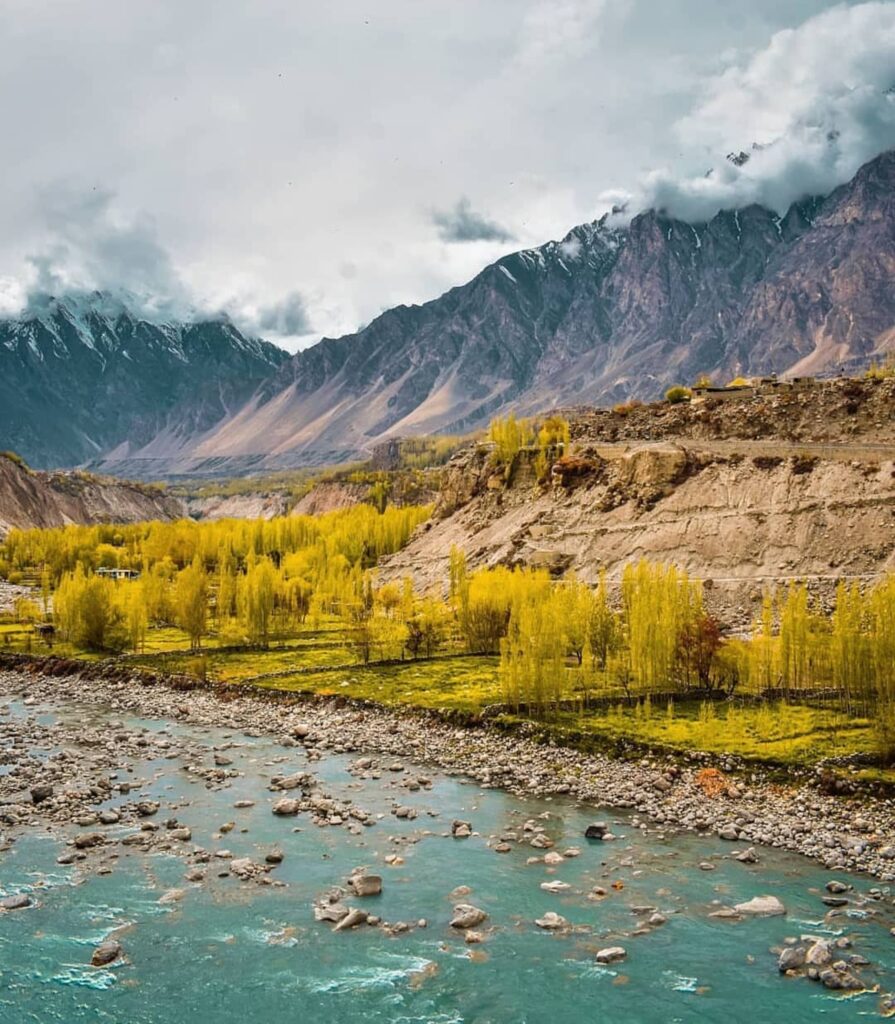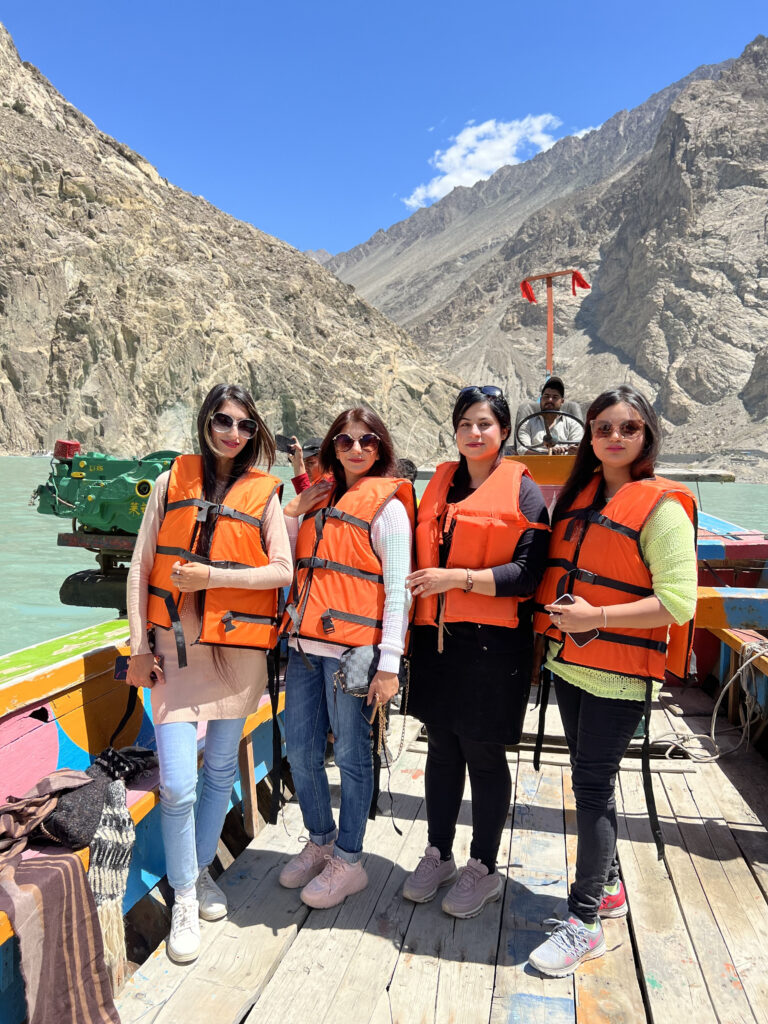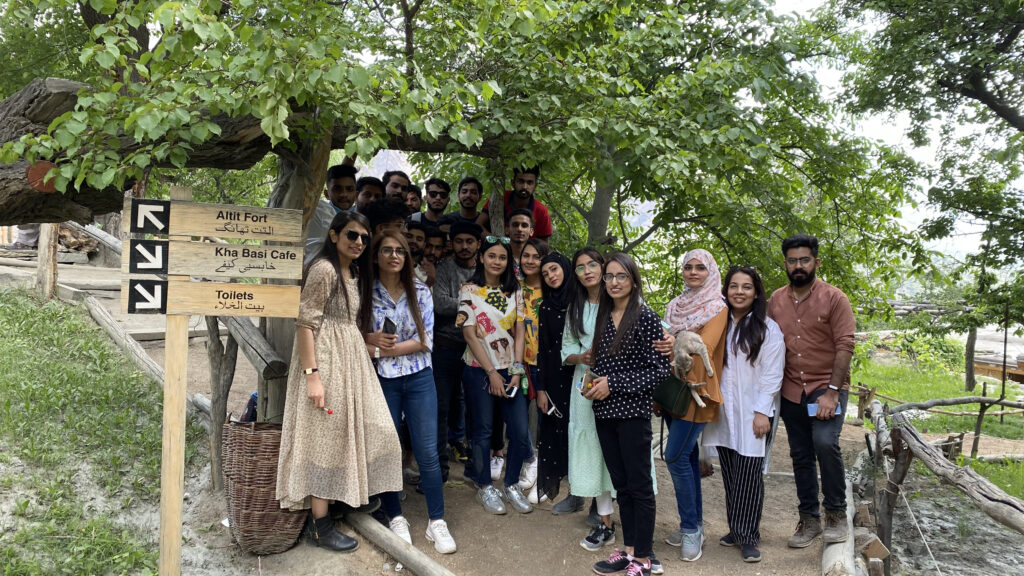HUNZA & NAGAR VALLEY
𝗛𝘂𝗻𝘇𝗮 𝗩𝗮𝗹𝗹𝗲𝘆 is a mountainous valley in the Gilgit–Baltistan region of Pakistan. The Hunza is situated north/west of the Hunza River, at an elevation of around 2,500 meters (8,200 ft). The territory of Hunza is about 7,900 square kilometers (3,100 sq mi).
Nagar Valley, also known as the “Valley of Precious Stones,” is a scenic and culturally rich valley located in the Gilgit-Baltistan region of Pakistan. Nestled among the towering peaks of the Karakoram Range, the valley offers breathtaking landscapes, cultural treasures, and a warm hospitality that captivates visitors.
Aliabad is the main town while Baltit is a popular tourist destination because of the spectacular scenery of the surrounding mountains like Ultar Sar, Rakaposhi, Bojahagur Duanasir II, Ghenta Peak, Hunza Peak, Passu Peak, Diran Peak, and Bublimotin (Ladyfinger Peak), all 6,000 meters (19,685 ft) or higher.
𝗞𝗵𝘂𝗻𝗷𝗲𝗿𝗮𝗯 𝗣𝗮𝘀𝘀 (elevation 4,693 meters or 15,397 feet) is a high mountain pass in the Karakoram Mountains in a strategic position on the northern border of Pakistan’s Gilgit–Baltistan Hunza – Nagar District on the southwest border of the Xinjiang region of China. Its name is derived from Wakhi ‘Khun’ means Home and ‘Jerav’ means spring water/water falling.
𝗣𝗮𝘀𝘀𝘂 is a small village on the Karakoram Highway, beside the Hunza River, some 15 kilometers from Gulmit, the Tehsil headquarters of Gojal in the Gilgit-Baltistan region of Pakistan, and about 150 km upriver from Gilgit. It lies very near the tongue of the Passu Glacier, and just south of the tongue of the Batura Glacier. The latter is the fifth longest non-polar glacier in the world at 56 km and reaches very near to the highway. Tupopdan, 6,106 meters (20,033 ft), also known as “Passu Cones” or “Passu Cathedral”, lies to the north of the village; it is the most photographed peak of the region. Borith Lake is a lake in the Gilgit–Baltistan, Pakistan. Borith is a hamlet in the surroundings of the Borith Lake to the northwest of Husseini, a village near Gulmit, Gojal, in the upper Hunza. The altitude of Borith is roughly 2,600 m (8,500 feet) above sea level.
𝗚𝘂𝗹𝗺𝗶𝘁 is the headquarters of the Gojal Tehsil, in the upper Hunza region of the Gilgit territory in the Gilgit Baltistan region of Pakistan. Gulmit is a centuries-old historic town, with mountains, peaks, and glaciers. It is a tourist spot and has many hotels, shops, and a museum. Its altitude is 2408 m (7900 ft) above the Arabian Sea level. Small hamlets consist of Kamaris, Odver, Dalgiram, Laksh, Kalha, Shawaran, Khor Lakhsh, Chamangul, and Goze. Gulmit is also a Turkish or Iranian word that means “the valley of flowers”.
𝗦𝗼𝘀𝘁 is a village in Gojal, Upper Hunza, Gilgit–Baltistan, Pakistan. It is the last town inside Pakistan on the Karakoram Highway before the Chinese border. The town is an important place on the highway for all passenger and cargo transport because all traffic crossing the Pakistan-China border passes through this town; the Pakistani immigration and customs departments are based here. Pakistan and China have opened borders for trade and tourism at Khunjerab.
Other Trips
These are other trips.


- Jan
- Feb
- Mar
- Apr
- May
- Jun
- Jul
- Aug
- Sep
- Oct
- Nov
- Dec


- Jan
- Feb
- Mar
- Apr
- May
- Jun
- Jul
- Aug
- Sep
- Oct
- Nov
- Dec


- Jan
- Feb
- Mar
- Apr
- May
- Jun
- Jul
- Aug
- Sep
- Oct
- Nov
- Dec
